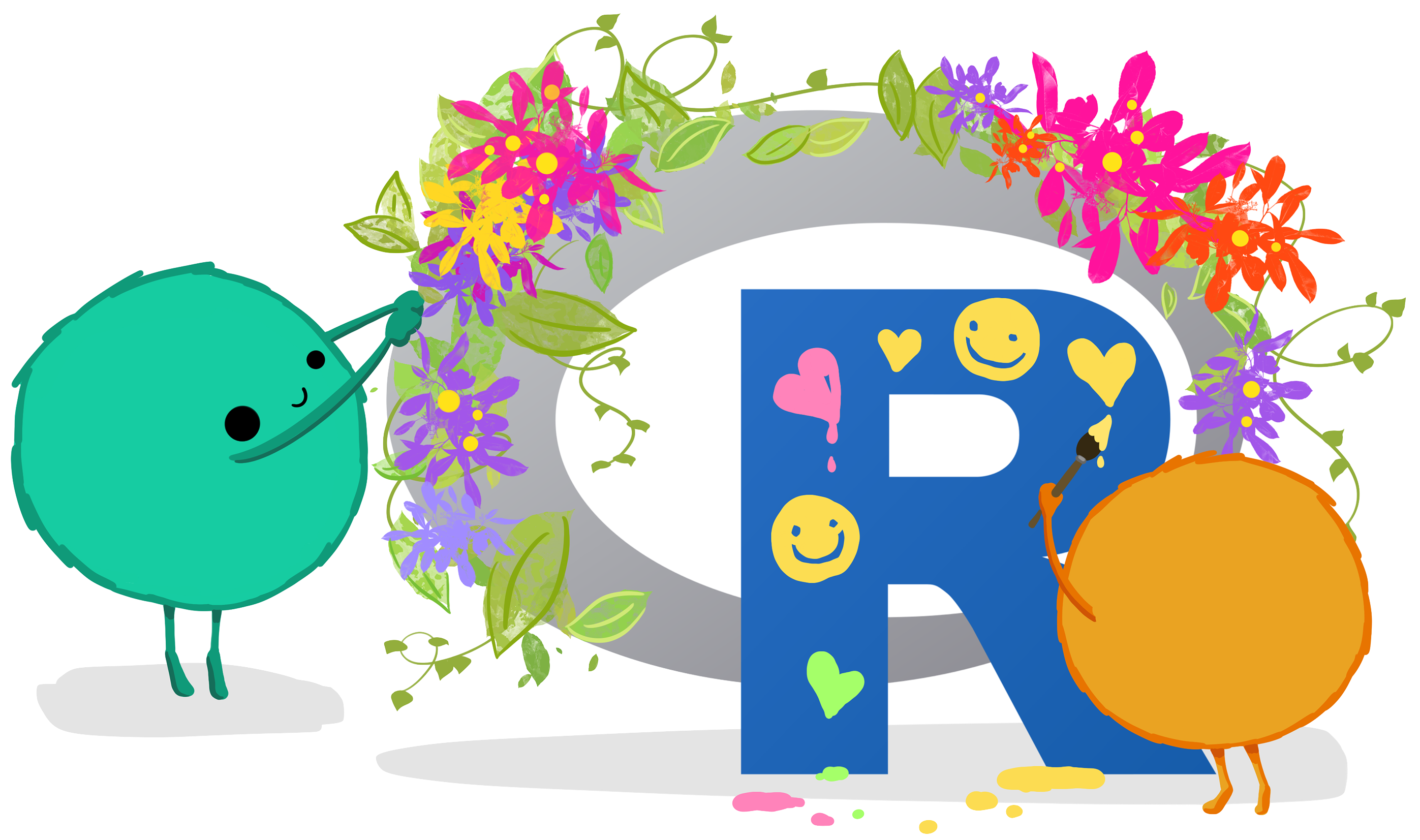usethis::use_github()Lab 2: Getting Started on your Portfolio
1 Part One: Workflow for Lab Setup
1.1 Step 1: Make a New Project in RStudio
Either under File, or in the top right corner where the current project name is, select
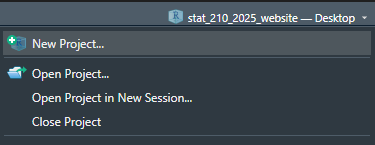
1.2 Step 2: Choose a New Directory
For this week, you will create a New Directory.
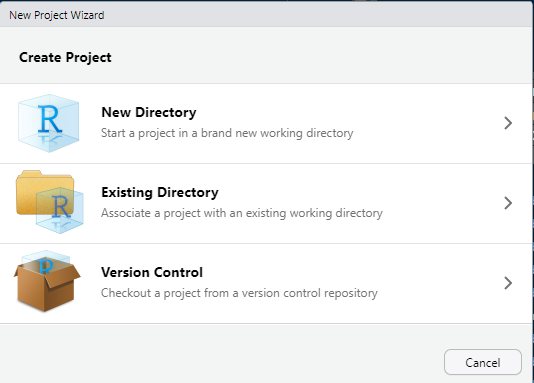
1.3 Step 3: Choose Quarto Website
Instead of New Project, choose Quarto Website
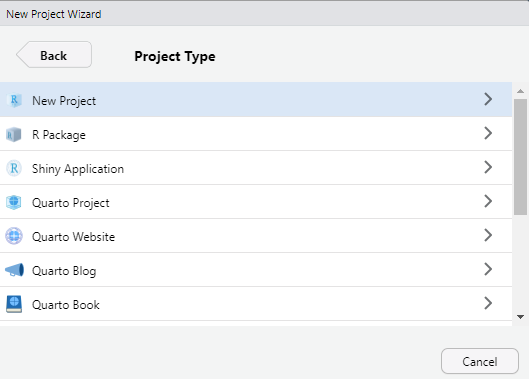
Set up your directory name (it should be your-name-portfolio or something similar) and saved in a location that is NOT on a cloud service (e.g. iCloud or Google Drive). Be sure to check Create a git repositoryand Open in a new session. Create the Project.

Now you have your website!!
1.4 Step 4: Render your Website
In the pane at the top right corner there should be a tab that say Build. Under Build there is an option to Render Website, go ahead an click that and it will render the generic website.

Here is roughly what the page will look like.
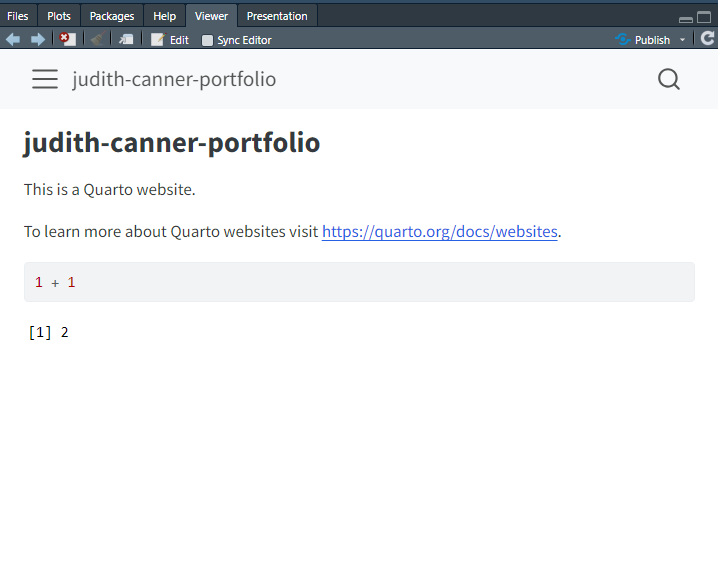
2 Part Two: Connecting to GitHub
You may have realized that you didn’t use Version Control to connect this project to a GitHub repository so let’s do that.
It is pretty straightforward. Simply run the following in the Console:
Note, if you didn’t select Create a git repository when you created the website you may need to run usethis::use_git() first. It is possible it will ask you to make Commits. Go ahead an commit your changes (but don’t push) and then run the code above again. The above code should generate a repository and push the website contents to GitHub.

3 Part Three: Customizing Your Webpage
3.1 About
Let’s start easy. Go into your about.qmd and write a short paragraph introducing yourself. Now is a good time to save your changes then Stage, Commit, and Push your changes to GitHub.
3.2 Index
The index.qmd will serve as your home page for your website, so let’s make it pretty! Update the YAML code with the following and then update title. Move a nice profile image into your project folder and change the file name after image: to match your images name and type (e.g. .jpg, .png). Update the LinkedIn and Github links to match your profile links (if you don’t have LinkedIn make one!).
---
title: "Judith Canner"
about:
template: jolla
image: profile.jpg
links:
- icon: linkedin
text: LinkedIn
href: https://linkedin.com
- icon: github
text: Github
href: https://github.com
---Go ahead and save and then under Build, Render the website. How does it look?
Within the text/markdown area of the .qmd add some of the following information about yourself:
Judith Canner is a Professor of Statistics and Chair of the Department of Mathematics and Statistics at [California State University, Monterey Bay](http://csumb.edu/mathstat).
## Education
Shippensburg University | Shippensburg, PA
B.S. in Applied Mathematics | 2001 - 2004
## Experience
Wengo Analytics | Head Data Scientist | April 2018 - present
GeoScynce | Chief Analyst | Sept 2012 - April 2018Go ahead and save and then under Build, Render the website. Now is a good time to save your changes then Stage, Commit, and Push your changes to GitHub.
Feel free to make other changes, add additional text, links, or images.
3.3 _quarto.yml
Open up the _quarto.yml. This document controls the structure of your webpage. You do not put content here, you simply put information about how the website should render. Your text might look something like this (and if it doesn’t, update it to look like this):
project:
type: website
website:
title: "Your Name's ePortfolio"
navbar:
left:
- href: index.qmd
text: "Home"
- href: about.qmd
text: "About Me"
format:
html:
theme: cosmo
css: styles.css
toc: true
editor: visualYou can update the theme if you want - Quarto HTML Theming or customize your theme or even create your own css code (if you know how). That is up to you!
At minimum, here is the modification you need to make the following modification - add the output-dir: docs at the top under project/type.
project:
type: website
output-dir: docsWhat this does is renders the HTML parts of your website directly into a folder called /docs and this locations is what we will use to publish your webpage on GitHub.
Save your changes. Build your website (notice a docs file is now created. Now is a good time to save your changes then Stage, Commit, and Push your changes to GitHub
4 Part Four: Publish Your Webpage
Ok, here is the final step! You only need to do this once and then after that, every time you push your changes to GitHub it will update your website.
On GitHub, within your repository, go to Settings:


Under “Build and deployment” be sure that “Source” is set to “Deploy from branch”. Then under “Branch” select “main” instead of “None” and “/docs” instead of “/(root)”. Then click “Save”

Now give it a minute or two. Then refresh your page and you should see the following information:
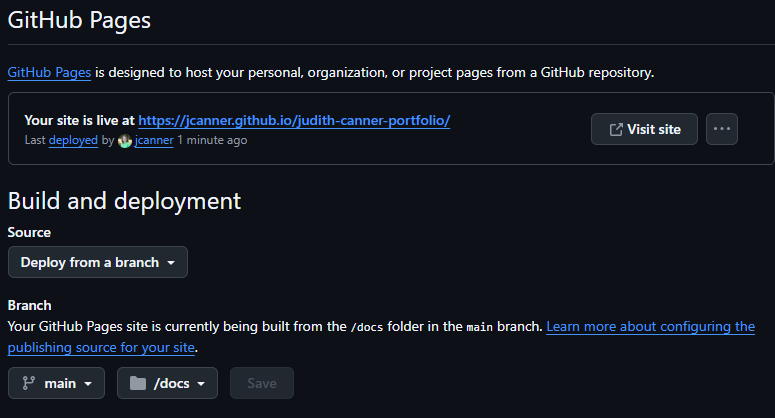
Now go ahead and visit your site!
Last step, go back to your repository on GitHub and in the “About” section on the right, then click the gear symbol and set the website to “Use your GitHub Pages website”
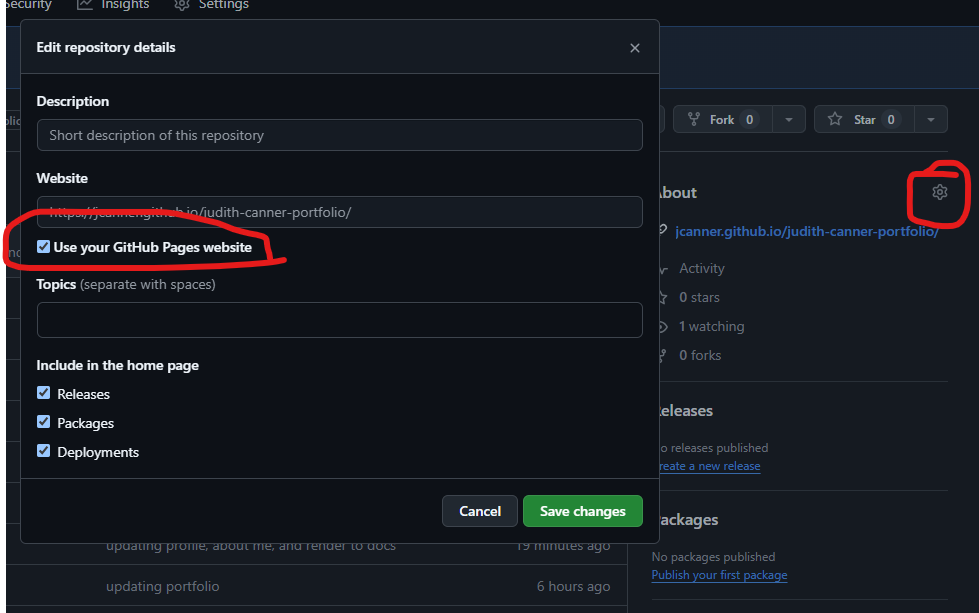
Submit a link to your Repository for your Lab 2 Assignment in Canvas.
5 Learn More
If you want to learn more of the “nitty-gritty” of website development in quarto, you can check out their Guide to Websites (select RStudio) as your tool).
